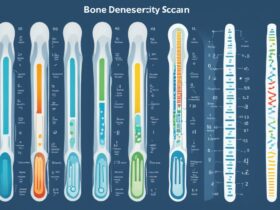As I navigate the education landscape, the concept of intersectional education looms intriguingly before me. This approach goes beyond surface-level understanding to dissect the complex layers of individuals’ identities.
Acknowledging the interconnected nature of various social categories aims to create a more inclusive and just educational environment. But how does this translate into tangible strategies within the classroom?
Let’s explore intersectional education’s practical applications and benefits, unraveling its potential to reshape our educational systems and empower students from all backgrounds.
Understanding Intersectionality in Education

In education, understanding intersectionality is paramount for fostering inclusivity and addressing systemic inequalities. Embracing an intersectional approach in the classroom involves recognizing the complex ways in which individuals’ intersecting identities, such as race, gender, class, and sexuality, influence their experiences and opportunities for learning. By acknowledging these multiple dimensions of identity, educators can create a more equitable and supportive learning environment that caters to the diverse needs of all students.
In a classroom setting, an intersectional perspective allows teachers to move beyond a one-size-fits-all approach to education. It enables them to consider how factors like race, gender, and socioeconomic status intersect to shape students’ experiences and educational outcomes. By understanding these intersections, educators can better address individual needs and provide tailored support to ensure all students have equal opportunities to thrive academically.
Furthermore, an intersectional lens in education serves as a powerful tool for promoting inclusivity and challenging systemic biases. By actively incorporating intersectionality into teaching practices, educators can empower students, foster empathy, and work towards dismantling entrenched inequalities within the educational system. Ultimately, understanding and embracing intersectionality in education is essential for creating a truly equitable and inclusive learning environment.
Benefits of Intersectional Pedagogy
Utilizing an intersectional pedagogy in educational practices fosters a holistic understanding of students’ diverse identities and experiences, promoting inclusivity and equity in the classroom. By acknowledging students’ intersecting identities, such as race, ethnicity, class, ability, and gender, educators can create a learning environment that values each student’s unique perspective. This approach not only empowers students by recognizing their individual complexities but also works towards dismantling oppressive systems that might disadvantage certain groups.
Furthermore, intersectional pedagogy is crucial in promoting equity within the classroom. It ensures that teaching approaches don’t inadvertently oppress or marginalize students based on their intersecting identities. Educators can help students develop critical thinking skills regarding privilege and power dynamics by incorporating diverse communities and identities into the curriculum.
Moreover, by acknowledging and respecting students’ intersecting identities, particularly those of minoritized groups, intersectional pedagogy fosters inclusive environments where all students feel valued and supported. This inclusivity deepens connections, broadens the diversity of reading materials, and ultimately enhances student engagement and learning outcomes.
Implementing Intersectional Education Strategies

Acknowledging the diverse identities of students, particularly their intersecting characteristics such as race, ethnicity, class, ability, and gender, is fundamental when implementing intersectional education strategies. Viewing education through an intersectional lens allows educators to cater to the unique needs of students by embracing their multifaceted identities.
To effectively implement intersectional education strategies, educators can:
- Utilize Culturally Responsive Teaching: By incorporating students’ diverse cultural backgrounds into the curriculum, educators can create a more inclusive learning environment that resonates with all learners.
- Addressing the Intersecting Needs of Students: Recognizing how students’ intersecting identities impact their educational experiences is crucial in providing tailored support and resources to meet their individual needs.
- Promoting Equity: Ensuring that all students have equal opportunities to succeed by dismantling systemic barriers and biases through intersectional education strategies fosters a more equitable educational landscape.
Implementing intersectional education strategies requires a deep commitment to understanding and valuing students’ diverse identities while promoting inclusivity and equity in educational spaces.
Impact on Student Learning
Intersectional education transforms student learning by recognizing and valuing the diverse identities and experiences that shape their educational journey. By acknowledging the intersecting identities of students, such as race, gender, class, and sexuality, educators can create a more inclusive and equitable learning environment. This approach allows for a deeper understanding of how these multiple identities influence students’ perspectives and interactions within the classroom. Moreover, incorporating intersectionality into education challenges traditional power dynamics by encouraging critical thinking about privilege and oppression.
When students see their intersecting identities acknowledged and respected in the educational setting, it can enhance their sense of belonging and self-worth. By embracing intersectional approaches, educators not only promote inclusivity but also foster empathy among students. This, in turn, leads to a more supportive and respectful learning environment where all students feel valued and understood.
Ultimately, intersectional education empowers students to critically examine societal power structures and encourages them to think more deeply about issues of equity and social justice.
Challenges and Opportunities in Intersectional Education

Recognizing the systemic barriers to inclusivity and equity presents significant challenges in the realm of intersectional education, highlighting the need for tailored policies and practices to address these issues effectively.
When delving into the complexities of intersectional pedagogy, several challenges and opportunities become apparent:
- Identifying How Identities Intersect: Understanding how different aspects of individuals’ identities intersect and contribute to their experiences within educational systems is crucial for designing inclusive curricula and support structures.
- Addressing Systems of Oppression: Tackling deep-rooted systems of oppression requires a multifaceted approach that acknowledges historical injustices and actively works towards dismantling discriminatory practices within educational institutions.
- Urgency of Intersectionality in Lived Experiences: The urgency of integrating intersectional perspectives into education is underscored by the lived experiences of marginalized groups, emphasizing the need for educators to continually reassess and adapt their practices to foster a more equitable learning environment.
Navigating these challenges while seizing the opportunities presented by intersectional education is essential for promoting inclusivity and equity in educational settings.
Dive into engaging content on lifestyle, health, and beauty penned by Ambreia Meadows-Fernandez on SheKnows
Conclusion
In conclusion, intersectional education offers a transformative approach to understanding and addressing the complexities of diverse identities in educational settings.
By embracing intersectionality, educators can create inclusive and equitable learning environments that empower students from all backgrounds.
Through intentional strategies and a commitment to challenging traditional power structures, intersectional education has the potential to revolutionize the way we engage with diverse perspectives and promote a culture of respect and support in education.






